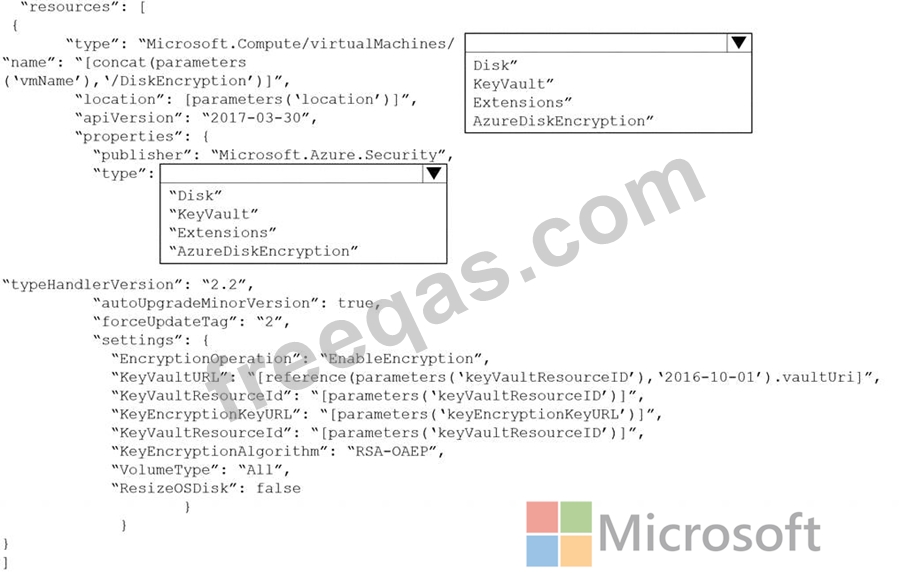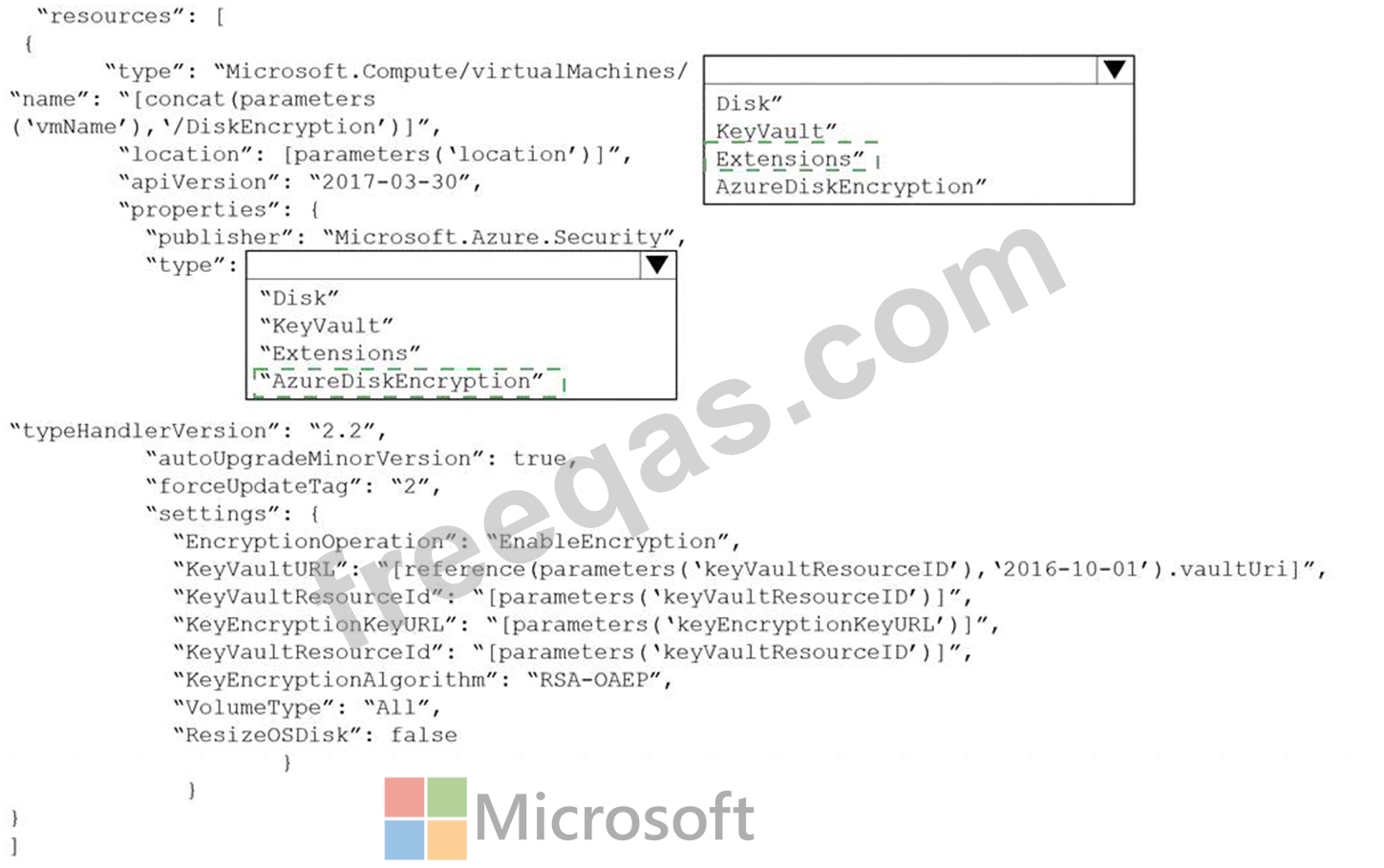You are implementing a highly available deployment of SAP HANA on Azure virtual machines. You need to ensure that the deployment meets the following requirements:
* Supports host auto-failover
* Minimizes cost
How should you configure the highly available components of the deployment? To answer, select the appropriate options in the answer area.
NOTE: Each correct selection is worth one point.

You have an on-premises SAP landscape that uses a DB2 database and contains an SAP Financial Accounting (SAP FIN) deployment. The deployment contains a file share that stores 50 TB of bitmap files. You plan to migrate the on-premises SAP landscape to SAP HANA on Azure (Large Instances) and Azure Files shares.
The solution must meet the following requirements:
* Minimize downtime.
* Minimize administrative effort.
You need to recommend a migration solution.
What should you recommend for each resource? To answer, drag the appropriate services to the correct resources. Each service may be used once, more than once, or not at all. You may need to drag the split bar between panes or scroll to view content.
NOTE: Each correct selection is worth one point.


You are planning the deployment of a three-tier SAP landscape on Azure that will use SAP HANA. The solution must meet the following requirements:
Network latency between SAP NetWeaver and HANA must be minimized.
An SAP production landscape on Azure must be supported.
Network performance must be validated regularly.
What should you include in the solution? To answer, select the appropriate options in the answer area.
NOTE: Each correct selection is worth one point.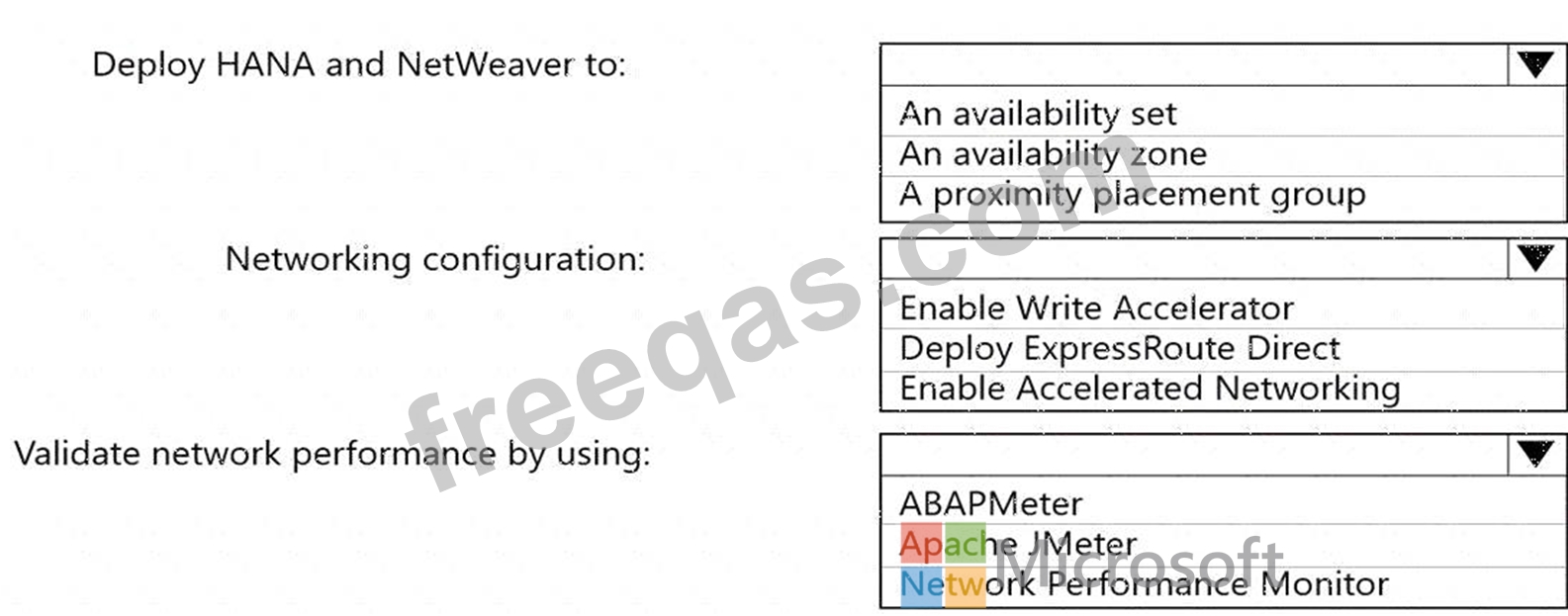

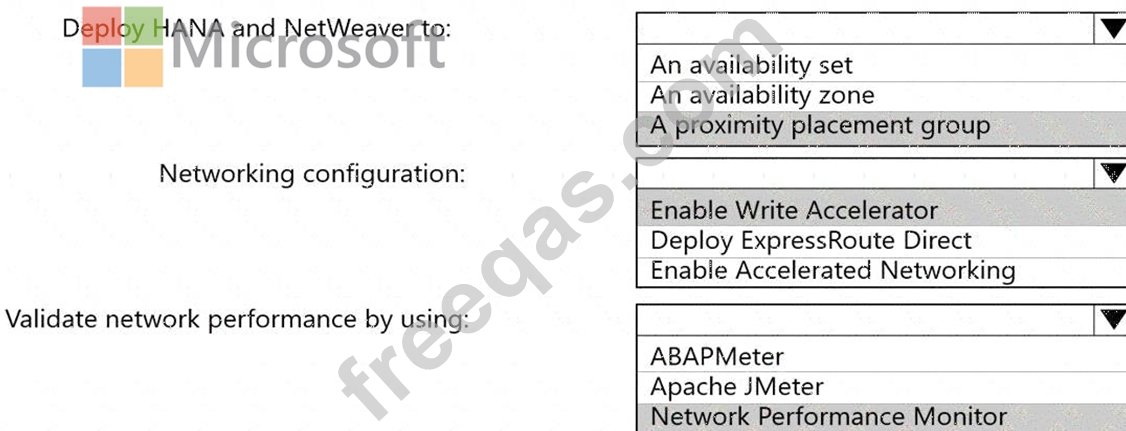
You have an Azure Active Directory (Azure AD) tenant and an SAP Cloud Platform Identity Authentication Service tenant.
You need to ensure that users can use their Azure AD credentials to authenticate to SAP applications and services that trust the SAP Cloud Platform Identity Authentication Service tenant.
In which order should you perform the actions? To answer, move all actions from the list of actions to the answer area and arrange them in the correct order.

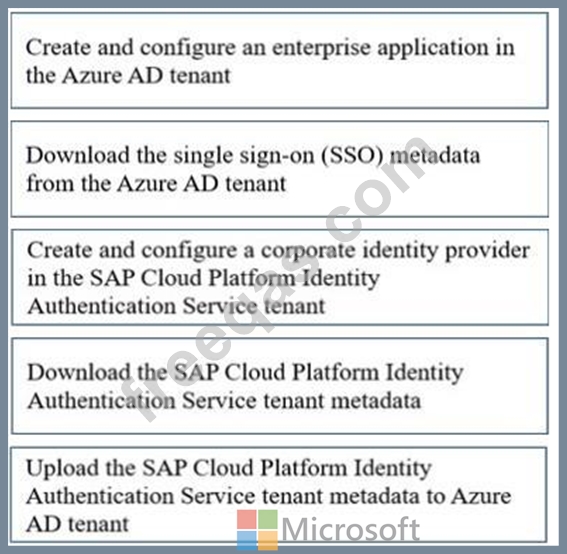

You have an SAP landscape on Azure.
You plan to deploy a new SAP application server by using an Azure Resource Manager template.
You need to ensure that all new servers are deployed with Azure Disk Encryption enabled.
How should you complete the relevant component of the template? To answer, select the appropriate options in the answer area.
NOTE:Each correct selection is worth one point.